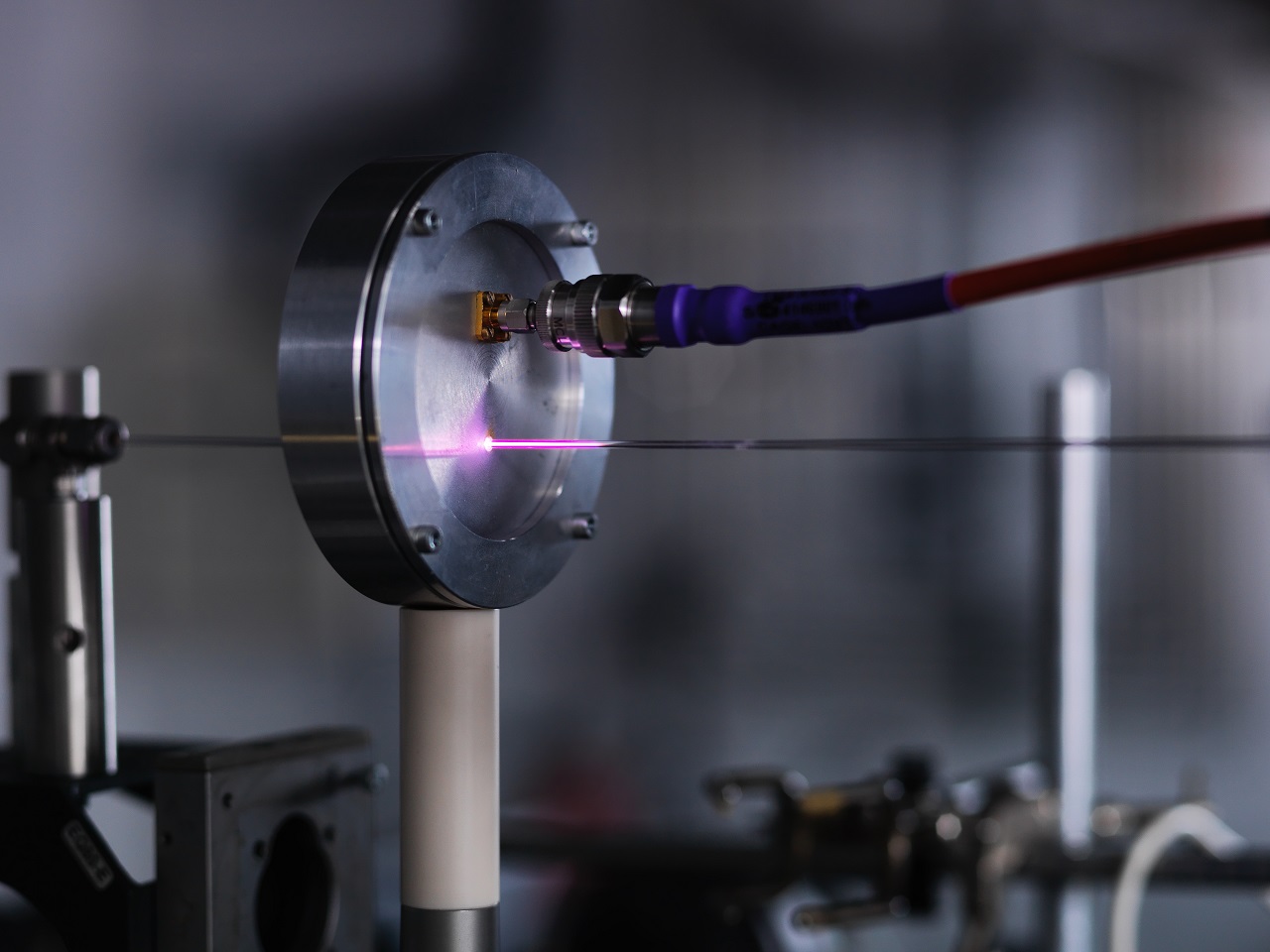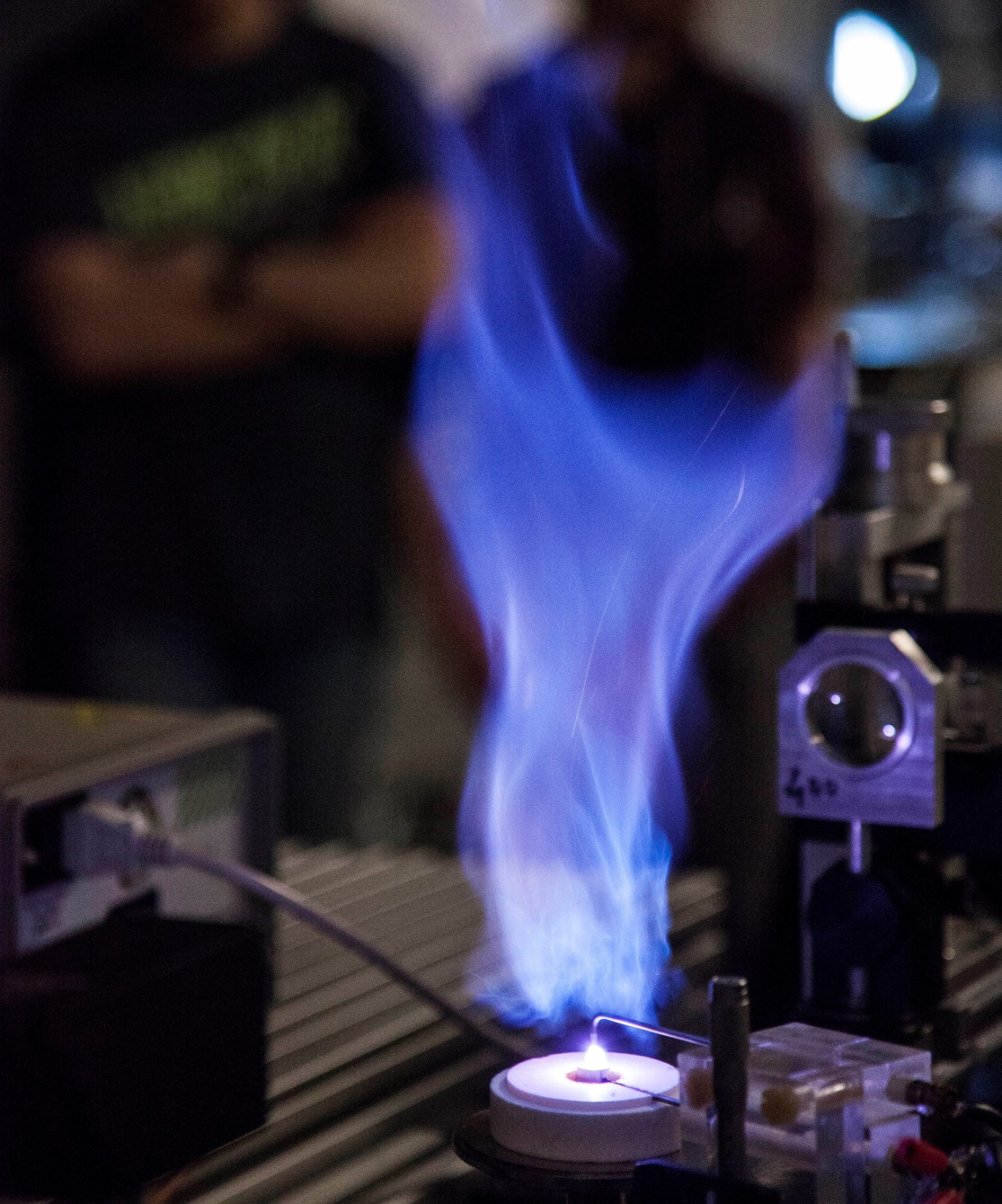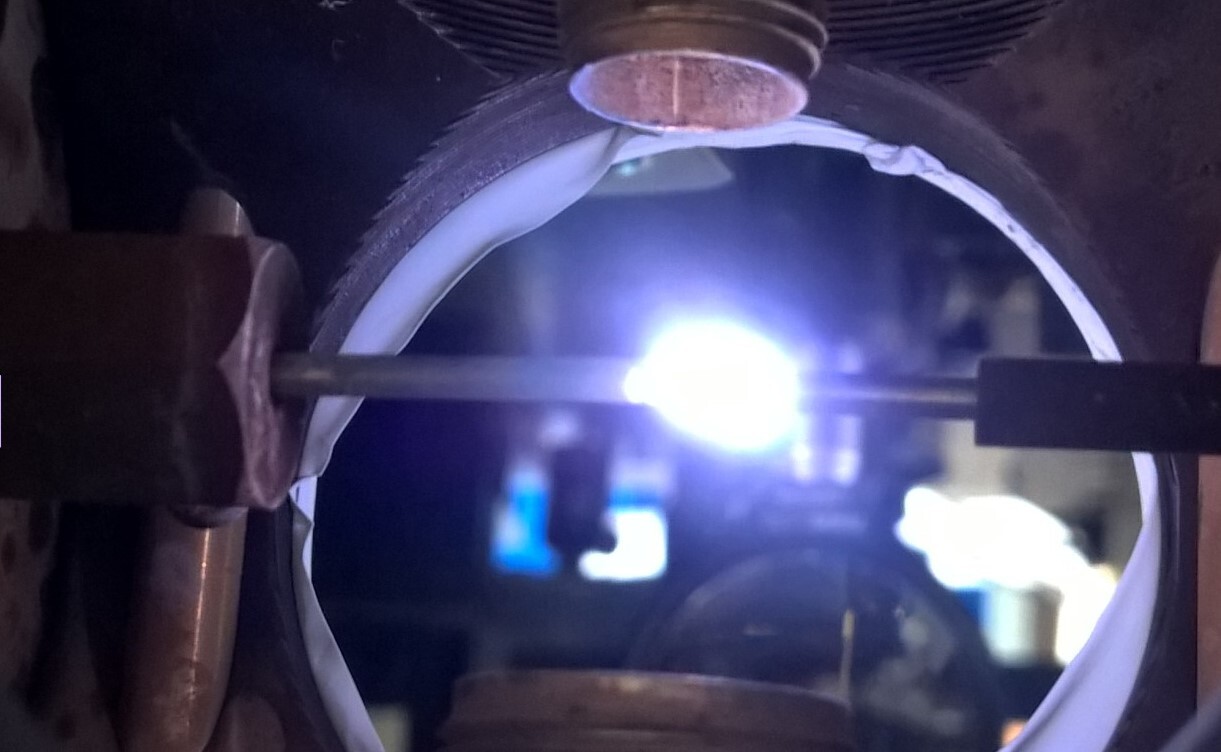Research Topics
Atmospheric Entry
Atmospheric entry is the last part of a space mission when the spacecraft enters the atmosphere of a planet. During the entry, the heat shield of the capsule experiences high conductive and radiative heat flux. The radiative heat flux emitted by the gas around the spacecraft is still very difficult to predict for high-velocity entries, above 11 km/s on Earth from asteroids, Mars, or the Moon for example.
Our team is working both experimentally and theoretically to improve and validate kinetic and radiation models to predict the radiative heat flux with more confidence and help space agencies (ESA, NASA) and companies (ArianeGroup) to optimize the design of their spacecrafts. Using our plasma torch, we can generate a representative plasma at atmospheric pressure and temperatures from 3000 to 8000 K. The gas mixture injected in the plasma torch can be adapted to match the composition of the different atmospheres in our solar system (Earth, Mars, Titan, Neptune, etc…). A large optical access allows us to perform detailed optical diagnostics to measure physical quantities. We also develop kinetic and radiation models that are validated against our experimental results.
Capillary Microwave Plasma
The interest of microwaves for the generation of micro-plasmas in capillaries is manifold: production of continuous plasmas (continuous reactivity); absence of electrodes in contact with plasmas (no electrode consumption/contamination); low power operation (∼10 W) but at high density (∼10 kW / cm3). Recent models have predicted strong productions of radicals comparable to those of NRP discharges. Due to the high surface/volume ratio of these micro-plasmas, the capillary plays an essential role in the plasma confinement, surface recombination, and heat exchange with the environment. Controlling the heat transfer is a key to extend the operating range to higher pressures and more difficult to ignite mixtures, but also to better tailor the reactivity, the selectivity, the spatial distribution of plasma species, temperatures and pressure. In collaboration with LPGP laboratory, we are developing surfatron/strip-line systems with control of heat transfer. The objective is to understand the kinetics, transport of reactive species and heat dissipation in these plasmas. This is essential for many potential applications of capillary microwave plasmas (e.g. photonics, thin film deposition, plasma assisted combustion, biomedical, laser guiding, …).


Plasma Assisted Combustion
At EM2C, we use Nanosecond Repetitively Pulsed (NRP) discharges to induce strong thermal, chemical, and hydrodynamic effects to flammable mixtures. These three effects have a positive impact on improving the ignition, the extinction limit, and the dynamic performance of combustion systems. Our study aims to (i) understand the fundamental mechanisms at stake in NRP discharges and (ii) to demonstrate efficient industrial application. Fundamental aspects of plasma-assisted combustion are studied with the simulation of an academic experiment by the Combustion Team of EM2C and with diverse diagnostics such as laser-induced fluorescence, Rayleigh scattering, optical emission spectroscopy, Schlieren. The application of NRP discharges has been efficiently applied to 10-kW burners at EM2C with an electrical power of approx. 1 % of the flame thermal power. The next challenge is to demonstrate the same concept on a 200-kW burner at EM2C (BIMER2-PAC) and at ONERA in collaboration with A. Vincent.
See related publications on ResearchGate.
Nitrogen Dissociation
Atomic nitrogen is used in many industrial applications such as nitridation, pollution control or sterilization. It has been theorized [1] that nitrogen could be dissociated at low energetical cost in a plasma if the reduced electric field in said plasma is high. Nanosecond Repetitive Pulse (NRP) discharges are able to generate such plasma [2]. Our team study the properties of this type of dissociations using, among other diagnostics, Optical Emission Spectroscopy (OES) [3] and femtosecond Two-Photon Laser Induced Fluorescence (fs-TALIF) [4]. This project is part of the ANR ASPEN task force [5].
1. Popov, N.A. Dissociation of nitrogen in a pulse-periodic dielectric barrier discharge at atmospheric pressure. Plasma Phys. Rep. 39, 420-424 (2013), https://doi.org/10.1134/S1063780X13050085
2. Diane Rusterholtz. Nanosecond Repetitively Pulsed Discharges in Atmospheric Pressure Air. Other. Ecole Centrale Paris, 2012. English. ⟨NNT : 2012ECAP0054⟩. ⟨tel-00997397⟩
3. C O Laux et al 2003 Plasma Sources Sci. Technol. 12 125
4. Ciprian Dumitrache, Arnaud Gallant, Gabi Daniel Stancu, Christophe O. Laux. Femtosecond Two-Photon Absorption Laser Induced Fluorescence (fs-TALIF) Imaging of Atomic Nitrogen in Nanosecond Repetitive Discharges. AIAA Scitech 2019 Forum, 2019, San Diego, France. ⟨10.2514/6.2019-1507⟩. ⟨hal-02494206⟩
5. ANR ASPEN: ANR-16-CE30-0004


CO2 Dissociation
We use non-equilibrium plasmas to convert green-house gases into value-added products. The project scope includes the measurement of the energy efficiency of the process for industrial applications, the kinetic modeling of the reaction to improve the efficiency, and in-situ measurements to calibrate the kinetic models. In-situ, time-resolved measurements are performed with visible and infrared emission spectroscopy, and laser diagnostics. Kinetic models have been developed that include 0-D, vibrational specific kinetic mechanisms with an emphasis on the modeling of electronic states. The project also resulted in a spin-off project from the Lab, Spark-Cleantech, where hydrogen is produced from CO2 - CH4 mixtures.
See related publications on ResearchGate.
Crédits photos : Cécile Oriot - CentraleSupélec



